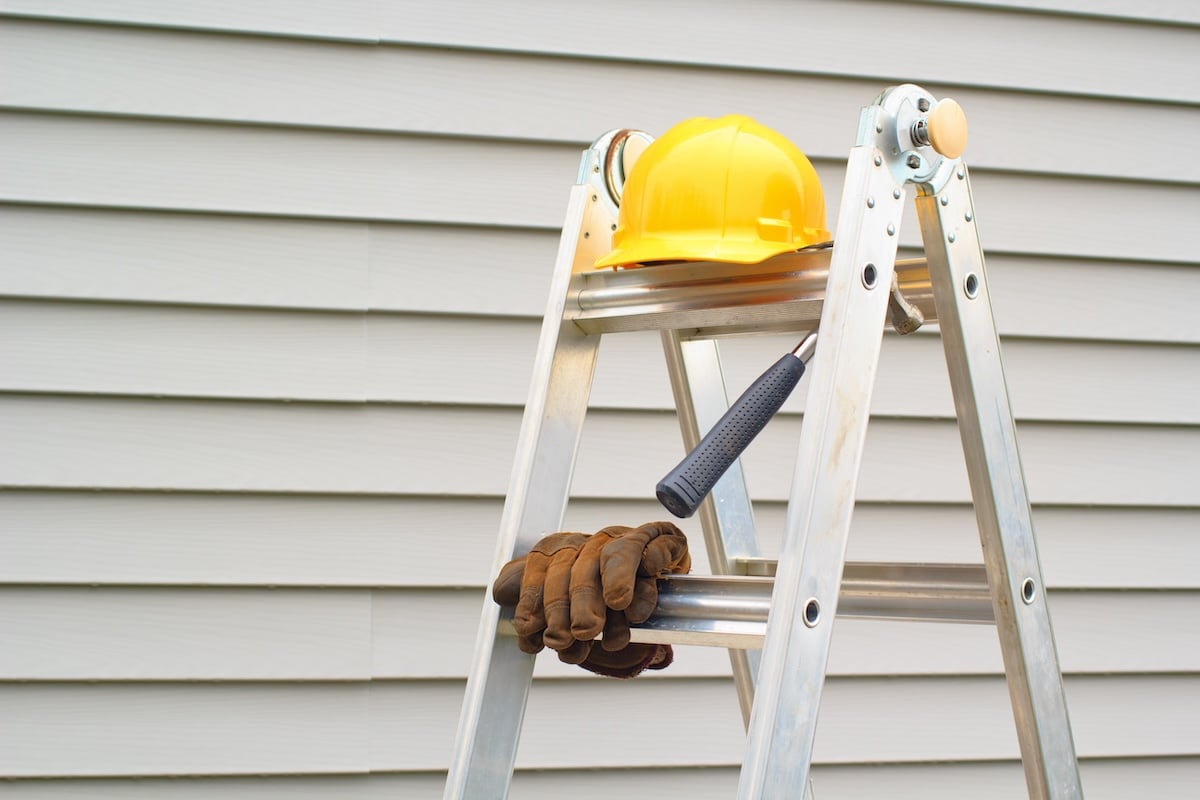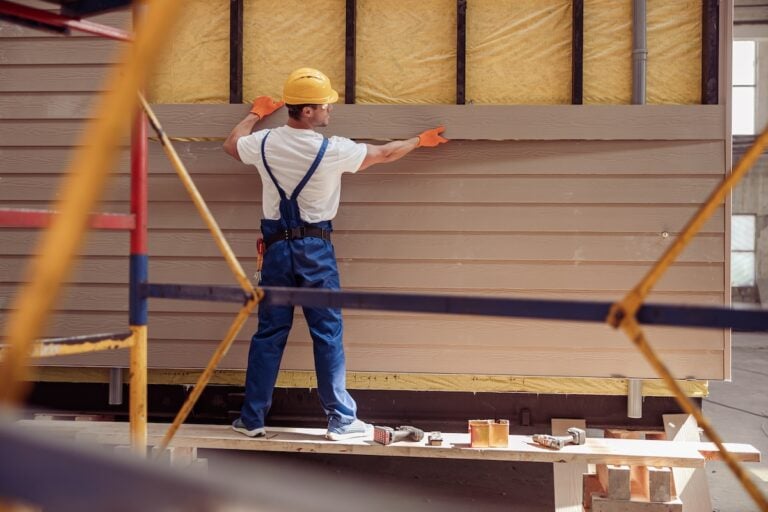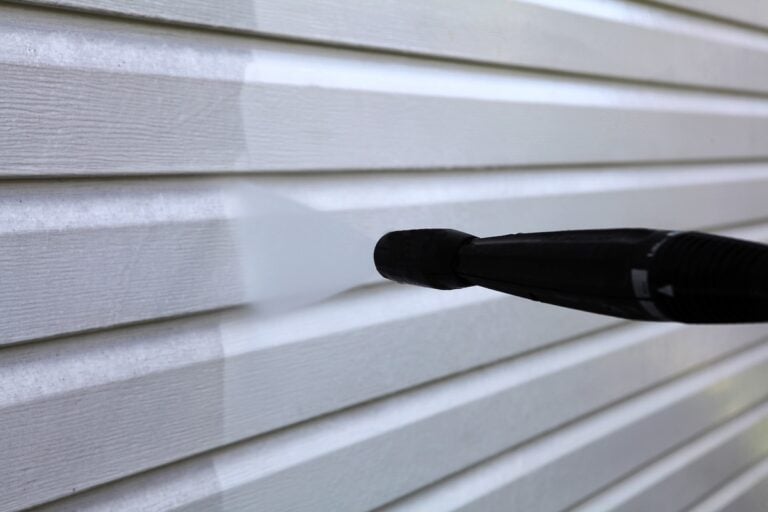If you’re planning a home upgrade or just trying to stay ahead of repairs, you might be wondering: how long does siding last in 2025? The answer depends on the type of material, your climate, and how well the siding is maintained.
In this blog, we’ll break down:
- Lifespan expectations by siding material: From vinyl and fiber cement to wood and metal.
- What impacts siding longevity: Including weather, maintenance, and installation quality.
- When it’s time to replace: Signs your siding is at the end of its lifespan.
Let’s explore how different siding materials hold up in today’s climate and construction landscape.
🤔 What Affects the Lifespan of Siding?
While manufacturer warranties offer a rough idea of how long your siding should last, real-world performance depends on several key factors.
Climate and Weather Exposure
Rain, wind, snow, and direct sunlight all play a role in how fast your siding wears down.
- Sun and UV exposure: Can fade color or make plastic-based siding brittle over time.
- Freeze-thaw cycles: In colder climates, repeated freezing and thawing can cause materials to expand, crack, or warp.
- Wind and debris: High winds or flying branches can damage or dent even the toughest materials.
Installation Quality
Even premium siding won’t last long if it’s installed poorly.
- Improper flashing or sealing: Can lead to hidden water damage.
- Inadequate fasteners: May cause panels to come loose or buckle.
- No moisture barrier: Leads to trapped water, rot, or mold beneath the surface.
Maintenance Routine
Routine upkeep extends the lifespan of any siding material.
- Regular cleaning: Removes grime, mold, and mildew that degrade finishes.
- Timely repairs: Fixing small cracks or holes prevents bigger problems later.
- Painting or sealing: Maintains moisture resistance in wood or metal siding.

🪵 Siding Lifespans by Material
Not all siding is created equal. Here’s a closer look at how long the most popular siding materials typically last in 2025.
Vinyl Siding: 20–40 Years
Vinyl remains one of the most popular siding options due to its affordability and ease of maintenance.
- Average lifespan: Most vinyl siding lasts 25 to 30 years, with high-quality products pushing 40 years.
- Pros: Low maintenance, affordable, doesn’t need painting.
- Cons: Can become brittle in cold climates or warp in extreme heat.
Regular power washing and avoiding harsh impacts can help extend its lifespan.
Fiber Cement Siding (e.g., James Hardie): 30–50 Years
Known for its durability and wood-like appearance, fiber cement siding is an excellent long-term investment.
- Average lifespan: Typically lasts 35 to 45 years, sometimes longer with care.
- Pros: Fire-resistant, insect-proof, and highly durable.
- Cons: Higher upfront cost and installation complexity.
Repainting every 10–15 years and inspecting caulk lines annually helps maximize longevity.
Engineered Wood Siding: 20–30 Years
A modern take on traditional wood, engineered wood offers strength and beauty at a lower cost.
- Average lifespan: Around 25 years with proper care.
- Pros: Resists rot and pests better than real wood, lightweight, and easier to install.
- Cons: Still susceptible to moisture issues if not sealed and maintained.
Touch-up painting and sealing every few years can extend its performance.
Traditional Wood Siding (Cedar, Pine): 15–40 Years
Wood siding offers timeless curb appeal, but it demands consistent upkeep to live a long life.
- Average lifespan: Cedar can last 30–40 years with care; pine and softer woods may only last 15–25.
- Pros: Classic look, sustainable material options.
- Cons: Prone to rot, insect damage, and high maintenance needs.
Staining or painting every 3–7 years and repairing damaged boards promptly is essential.
Metal Siding (Aluminum or Steel): 30–50 Years
Metal siding is often seen on modern homes or commercial buildings due to its durability.
- Average lifespan: Aluminum lasts around 30 years; steel can exceed 40–50 years.
- Pros: Fire-resistant, pest-proof, strong against wind and impact.
- Cons: Dents easily (especially aluminum), may fade or corrode without protective coatings.
Occasional repainting and rust treatment will help keep it looking sharp for decades.
Stucco Siding: 50–80 Years
Although less common in the Pacific Northwest, stucco is long-lasting in dry climates.
- Average lifespan: Up to 80 years when properly installed and maintained.
- Pros: Energy efficient, fire resistant, low maintenance.
- Cons: Prone to cracking in wet or freeze-prone climates.
In Oregon and similar regions, synthetic stucco systems (EIFS) with proper drainage systems are more weather-appropriate than traditional stucco.
⚠️ How To Tell When It’s Time To Replace Siding
Even if your siding is within its expected lifespan, there may be signs that it’s ready to be replaced.
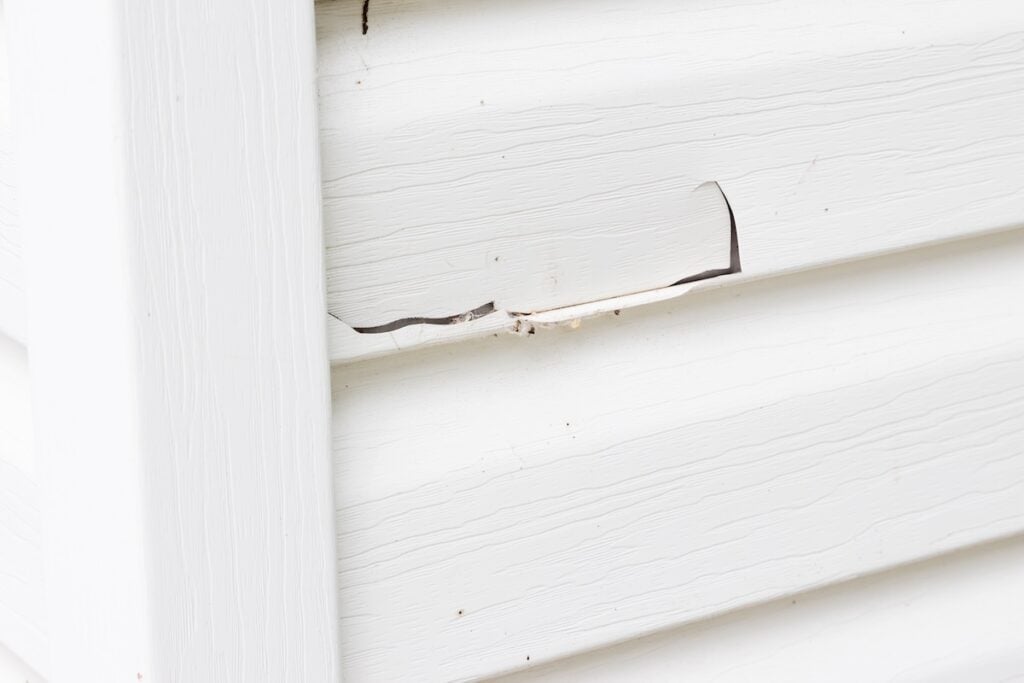
Cracks, Warping, or Rot
These physical signs often indicate moisture intrusion or structural issues underneath.
- Rotting boards: Common in older wood siding.
- Buckling vinyl panels: May indicate heat damage or improper installation.
- Cracks in fiber cement: Usually appear if the boards are too brittle or over-nailed.
Mold, Mildew, or Pest Activity
Unusual discoloration or foul odors can signal hidden water damage.
- Black streaks or green buildup: Usually caused by algae, mildew, or mold.
- Termite trails or holes: Indicate pest infestation, especially in wood siding.
Rising Energy Bills
If your siding is failing, it may no longer insulate your home effectively.
- Drafty rooms: A sign that outside air is getting in.
- Increased heating/cooling costs: Could indicate poor siding performance or inadequate insulation.
Frequent Repairs or Peeling Paint
If you’re constantly patching damage or repainting, your siding may be nearing the end of its usable life.
- Chalking paint: Common with old vinyl or aluminum.
- Blistering or bubbling: Often a sign of moisture trapped under the surface.
⭐️ Tips To Extend the Life of Your Siding
A little effort goes a long way when it comes to protecting your exterior.
- Annual cleaning: Use a soft wash or gentle pressure washing to remove dirt and mildew.
- Trim overhanging branches: Reduces wear from wind or debris.
- Inspect caulking and seams: Water intrusion often starts at the joints.
- Repaint or reseal: Stay ahead of cracking, peeling, or fading.
Even low-maintenance siding benefits from occasional attention.
📋 Siding Warranties in 2025: What To Look For
Understanding your warranty helps you plan for the future.
Manufacturer Warranty
Covers material defects and may range from 20 years to a lifetime, depending on the brand.
- Limited lifetime warranties: Common with premium vinyl and fiber cement siding.
- Transferable warranties: A selling point if you plan to move.
Workmanship Warranty
Offered by the installer and covers installation-related issues.
- Typical length: 1–10 years depending on the contractor.
- What’s covered: Warping, cracking, or moisture problems from improper installation.
Always get warranty info in writing and know who to contact if issues arise.
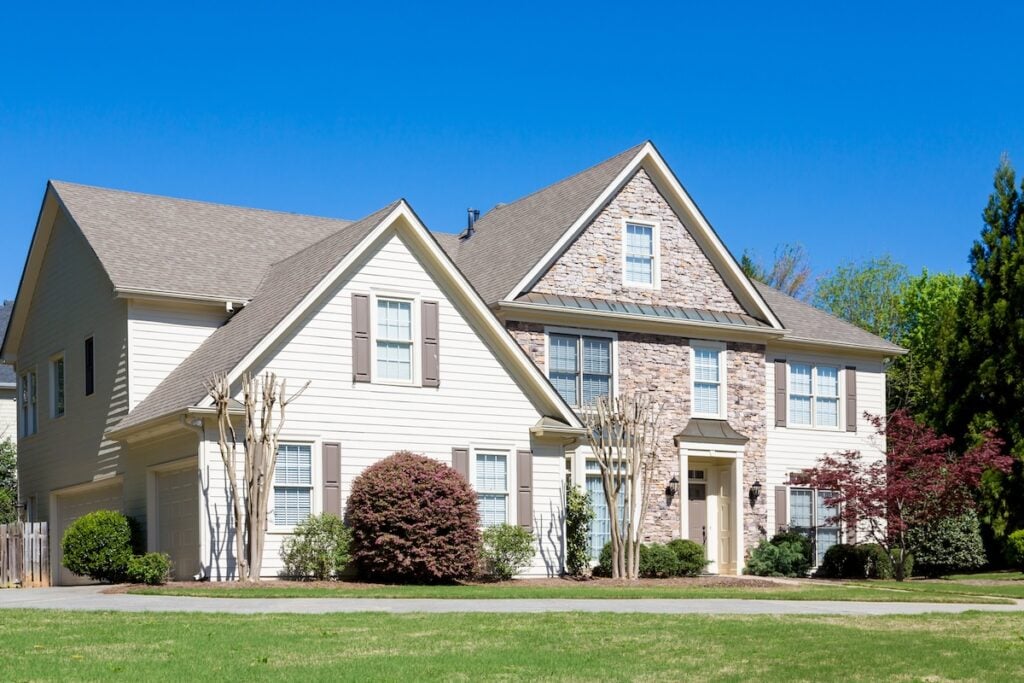
👉 Choose the Right Siding for the Long Haul
If you’ve ever asked, “how long does siding last,” the answer depends on more than just the material. Your climate, maintenance habits, and installer all play a role in how long your siding protects your home.
At Boss Exteriors, we help homeowners choose siding that fits their home, lifestyle, and long-term goals. Whether you need a quick repair, full replacement, or help understanding your options, we’re here to make the process clear and stress-free.
Ready to upgrade your siding with confidence? Contact Boss Exteriors today for expert guidance and an evaluation.
